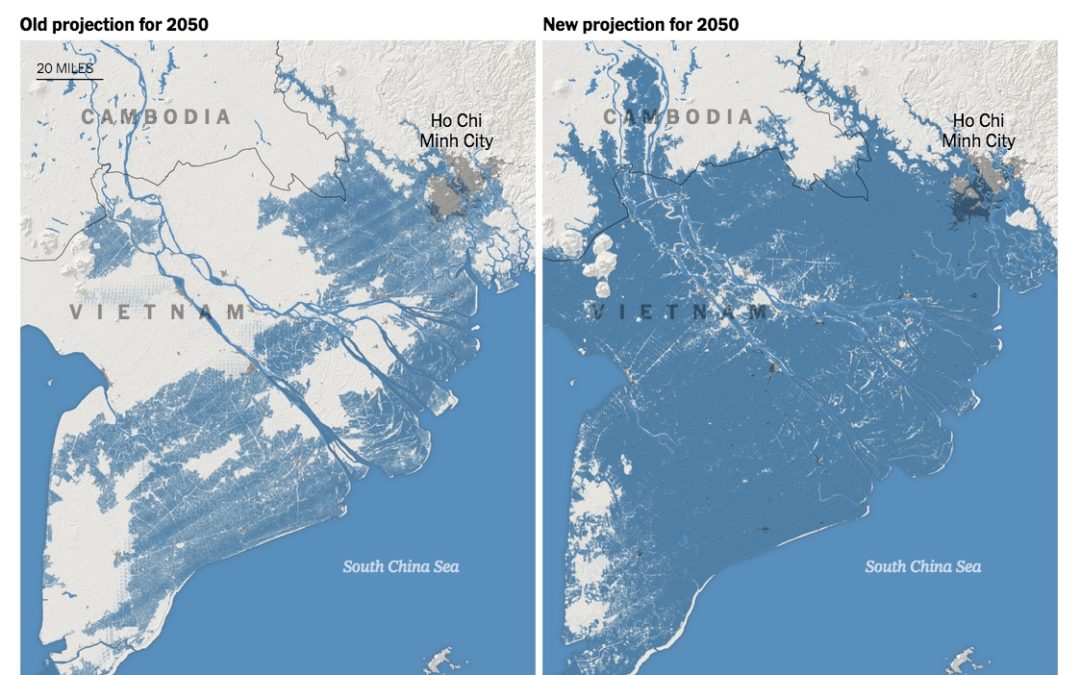SOURCE: New York Times
DATE: October 29, 2019
SNIP: Rising seas could affect three times more people by 2050 than previously thought, according to new research, threatening to all but erase some of the world’s great coastal cities.
The authors of a paper published Tuesday developed a more accurate way of calculating land elevation based on satellite readings, a standard way of estimating the effects of sea level rise over large areas, and found that the previous numbers were far too optimistic. The new research shows that some 150 million people are now living on land that will be below the high-tide line by midcentury.
Southern Vietnam could all but disappear.
The first map shows earlier expectations of submerged land by 2050. But the new outlook, the second map, indicates that the bottom part of the country will be underwater at high tide.
More than 20 million people in Vietnam, almost one-quarter of the population, live on land that will be inundated.
Much of Ho Chi Minh City, the nation’s economic center, would disappear with it, according to the research, which was produced by Climate Central, a science organization based in New Jersey, and published in the journal Nature Communications. The projections don’t account for future population growth or land lost to coastal erosion.
In Thailand, more than 10 percent of citizens now live on land that is likely to be inundated by 2050, compared with just 1 percent according to the earlier technique. The political and commercial capital, Bangkok, is particularly imperiled.
Climate change will put pressure on cities in multiple ways, said Loretta Hieber Girardet, a Bangkok resident and United Nations disaster risk-reduction official. Even as global warming floods more places, it will also push poor farmers off the land to seek work in cities.
The new projections suggest that much of Mumbai, India’s financial capital and one of the largest cities in the world, is at risk of being wiped out. Built on what was once a series of islands, the city’s historic downtown core is particularly vulnerable.
Over all, the research shows that countries should start preparing now for more citizens to relocate internally, according to Dina Ionesco of the International Organization for Migration, an intergovernmental group that coordinates action on migrants and development.
“We’ve been trying to ring the alarm bells,” Ms. Ionesco said. “We know that it’s coming.” There is little modern precedent for this scale of population movement, she added.
In other places, the migration caused by rising seas could trigger or exacerbate regional conflicts.
Basra, the second-largest city in Iraq, could be mostly underwater by 2050. If that happens, the effects could be felt well beyond Iraq’s borders, according to John Castellaw, a retired Marine Corps lieutenant general who was chief of staff for United States Central Command during the Iraq War.

